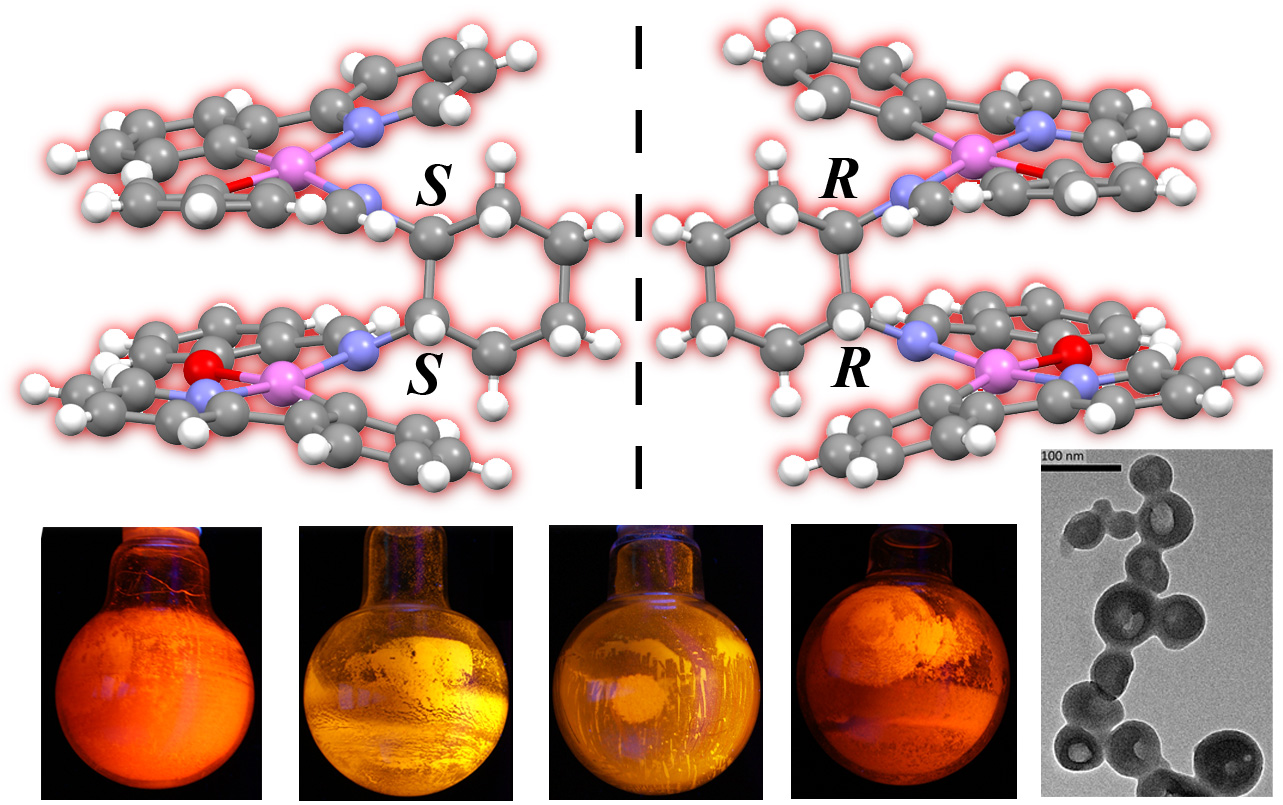博文
基于Salen桥联配体的二核Pt(II)配合物的合成、晶体结构、手性和聚集诱导磷光性质的研究
|
Syntheses, crystal structures, chirality and aggregation-induced phosphorescence of stacked binuclear platinum(II) complexes with bridging Salen ligands
L. Qu, C. B. Li, G. Y. Shen, F. Gou, J. T. Song, M. Wang, X. M. Xu, X. G. Zhou, and H.F. Xiang,* Mater. Chem. Front., 2019, DOI:
10.1039/C9QM00105K.
A novel class of cyclometalated binuclear Pt(II) complexes, [(C^N)Pt(μ-Salen)Pt(C^N)] (C^N = 2-phenylpyridine or benzo[h]quinoline, Salen = N,N’-bis(salicylidene)ethylenediamine), has been synthesized and characterized. Owing to the blockage of intramolecular rotation in bridging Salen ligands, all the double-layer stacked complexes exhibit strong aggregation-induced phosphorescence with quantum yields up to 0.35 through well-tuned intramolecular Pt–Pt interactions (3.37-4.48 Å) and strong multiple intermolecular interactions, such as H-H, C-H, O-H, Cl-H, and Pt-H interactions. Interestingly, if chiral Salen ligands are adopted, it is facile to prepare (R,R)/(S,S) enantiopure Pt(II) complexes, which were characterized by X-ray diffraction, circular dichroism spectra and time-dependent density functional theory calculations. This is the first example of stacked binuclear Pt(II) complexes with well-known tetradentate Salen ligands as bis-bidentatebridging ligands and would render a new structural motif for bridging ligands and chiral binuclear complexes.

https://blog.sciencenet.cn/blog-581887-1174089.html
上一篇:具有一维螺旋结构、金属诱导手性、聚集诱导磷光、消旋诱导发光、圆偏振发光的二核Pt(II)配合物
下一篇:智能、手性、非共轭的环己烷衍生的双水扬醛酰肼:多重刺激响应、开启、比率和温变荧光